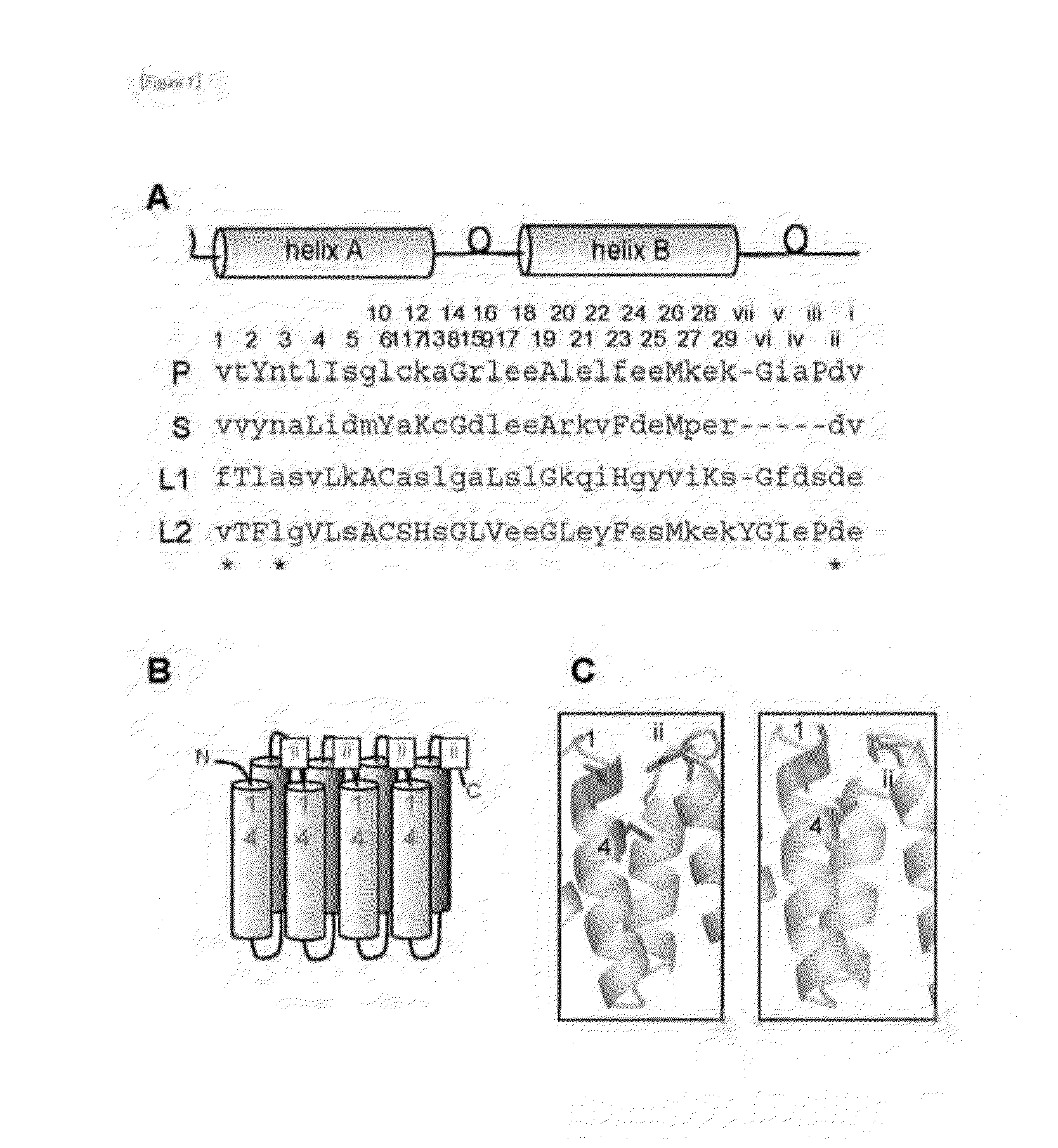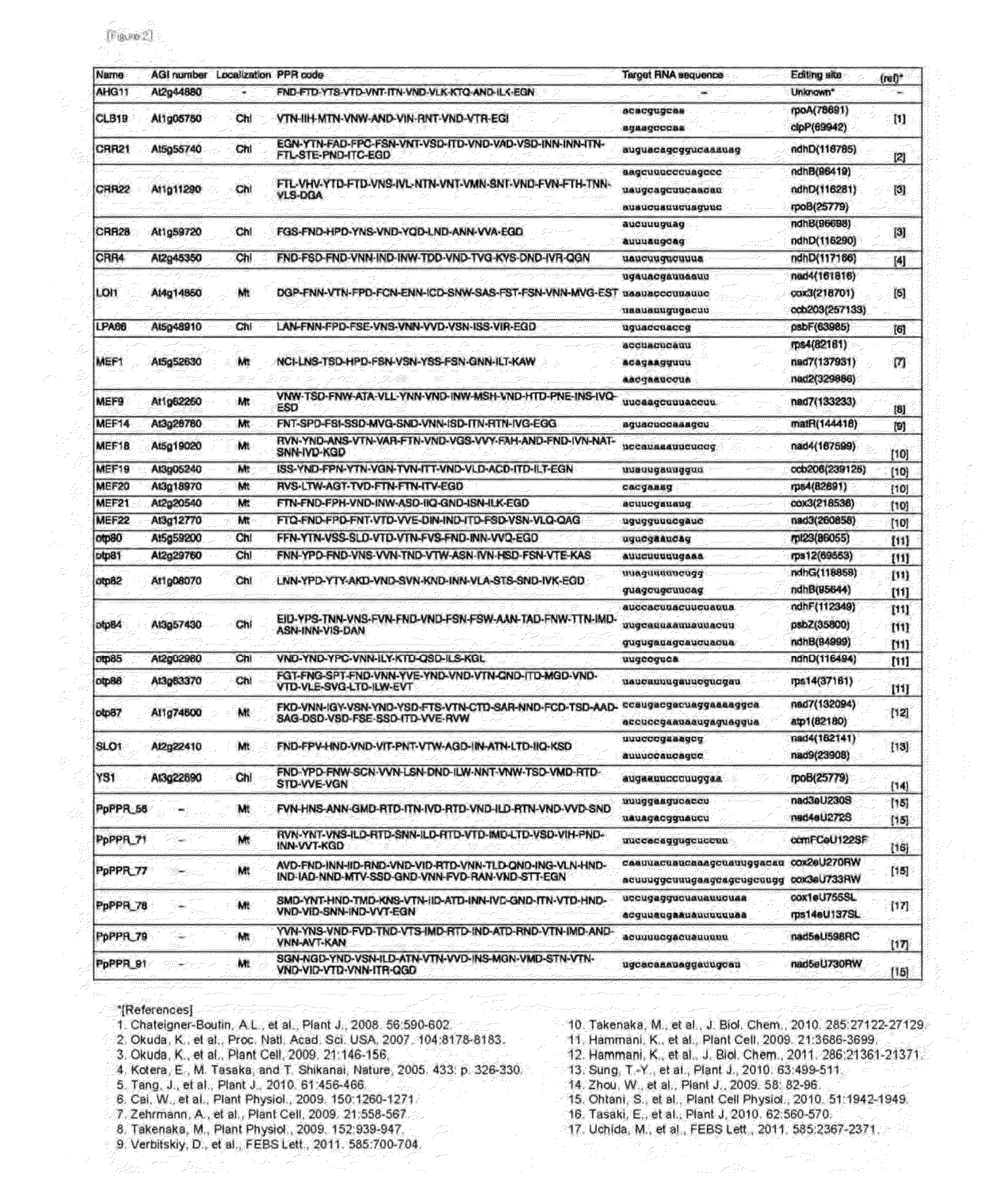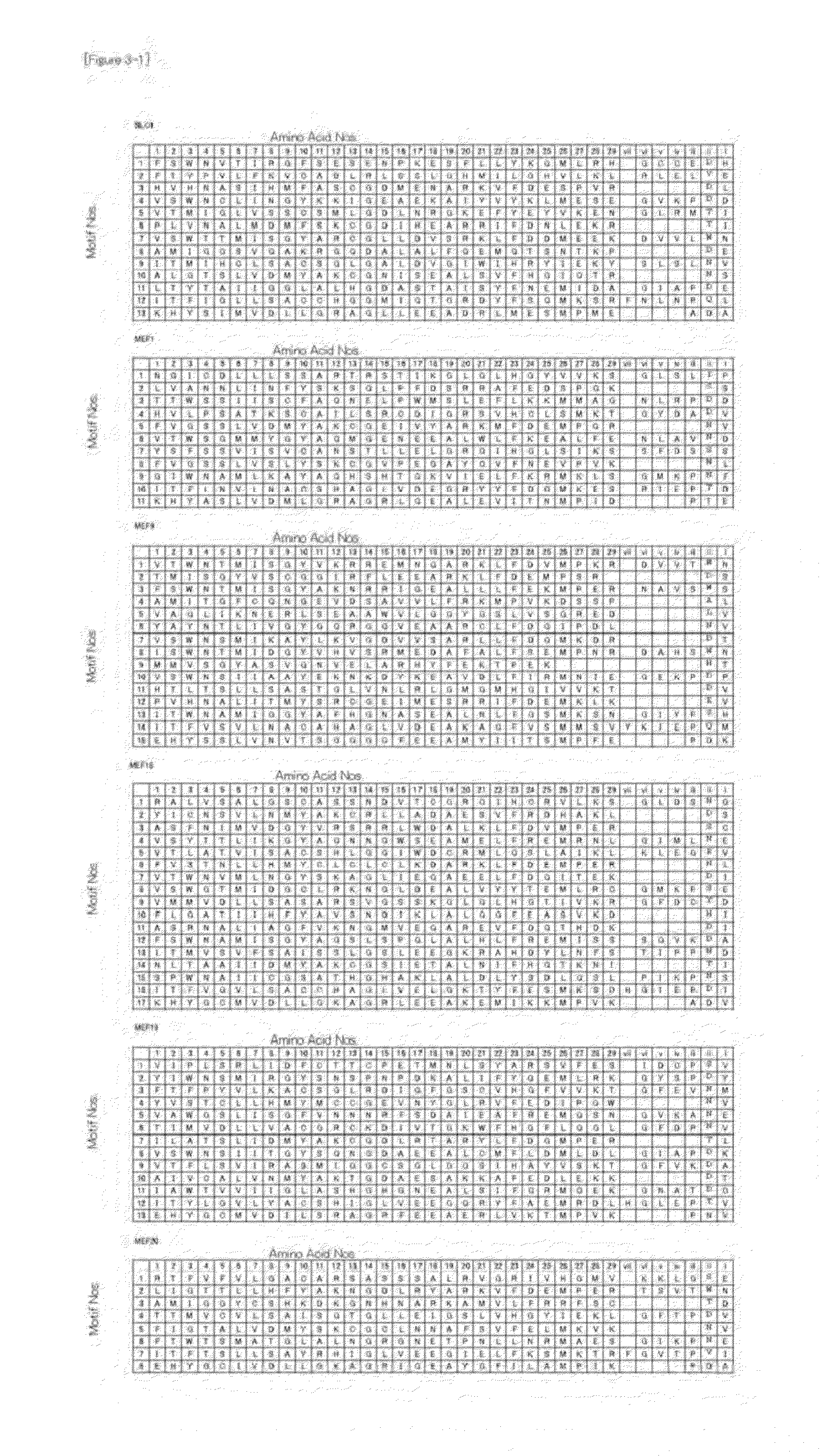Method for Designing RNA Binding Protein Utilizing PPR Motif, and Use Thereof
a technology of rna binding protein and motif, which is applied in the field of designing rna binding protein utilizing ppr motif, can solve the problems of scarcely clarifying the correlation between the amino acid constitution and the function thereo
- Summary
- Abstract
- Description
- Claims
- Application Information
AI Technical Summary
Benefits of technology
Problems solved by technology
Method used
Image
Examples
example 1
Collection of PPR Proteins Involved in RNA Editing and Target Sequences Thereof
[0110]With reference to the information shown in FIG. 2, the PPR proteins of Arabidopsis thaliana involved in RNA editing so far analyzed (SEQ ID NOS: 2 to 24) were collected from the Arabidopsis thaliana genome information database (MATDB: http: / / mips.gsf.de / proj / thal / db / index.html), and sequences around RNA-editing sites that serve as a target (SEQ ID NOS: 48, 50, 53, 55, 57, 59, 60, 61, 62, 63, 64, 65, 68, 69, 70, 71, 73, 74, 76, 78, 80, 122, 206, 228, 232, 252, 284, 316, 338, 339, 358, 430, 433, 455, 552 and 563) were collected from the RNA-editing database (http: / / biologia.unicalit / py_script / overview.html). As the RNA sequences, those of 31 nucleotides upstream from the editable C (cytosine) residue including that C were collected. All the collected proteins and RNA-editing sites corresponding to the proteins are shown in FIG. 2.
[0111]To the PPR motif structures in the proteins, the amino acid number...
example 2
Identification of Amino Acids that Impart Binding Base Selectivity
[0112]The researches so far elucidated that the PPR proteins involved in RNA editing have a motif having a specific conserved amino acid sequence on the C-terminus side (E, E+ and DYW motifs, provided that DYW motif often does not exist). It has been suggested that more than ten amino acids in the E+ motif are required for the conversion from C (cytosine) to U (uracil), not for the selective binding to RNA (Reference 3). Further, it has also suggested in the past non-patent paper that the information required for recognition of the editable C is included in the 20 upstream nucleotides and 5 downstream nucleotides thereof. That is, it can be predicted that a plurality of PPR motifs in the PPR protein recognize “somewhere” of the upstream sequence of the editable C, and the E+ motif locates near the editable C. Furthermore, there is considered a possibility that specific amino acids in the PPR motif may recognize the RN...
example 3
Verification of Identified RNA Recognition Codes
[0119]The RNA recognition codes for the PPR motifs identified by using the RNA-editing PPR proteins of Arabidopsis thaliana were verified. For the verification, the RNA-editing PPR proteins of Physcomitrella patens subsp. patens were used. It has already been elucidated that, in Physcomitrella patens subsp. patens (henceforth referred to as moss), RNA editing occurs at 13 sites in total (11 site in mitochondria, 2 sites in chloroplasts, SEQ ID NOS: 32 to 44). Further, it has also been elucidated that 6 PPR proteins (PpPPR—56, 71, 77, 78, 79, and 91) work for RNA editing at 9 sites, respectively. The proteins and corresponding RNA-editing sites are shown in FIG. 9.
[0120]The verification was performed as shown in FIG. 10. First, the amino acid sequence information of the moss PPR proteins was obtained from a non-patent paper (SEQ ID NOS: 26 to 31, FIGS. 2 and 9), and the three amino acids (1, 4, and “ii”) were extracted from each PPR mot...
PUM
| Property | Measurement | Unit |
|---|---|---|
| length | aaaaa | aaaaa |
| acid length | aaaaa | aaaaa |
| affinity | aaaaa | aaaaa |
Abstract
Description
Claims
Application Information
 Login to View More
Login to View More - R&D
- Intellectual Property
- Life Sciences
- Materials
- Tech Scout
- Unparalleled Data Quality
- Higher Quality Content
- 60% Fewer Hallucinations
Browse by: Latest US Patents, China's latest patents, Technical Efficacy Thesaurus, Application Domain, Technology Topic, Popular Technical Reports.
© 2025 PatSnap. All rights reserved.Legal|Privacy policy|Modern Slavery Act Transparency Statement|Sitemap|About US| Contact US: help@patsnap.com



